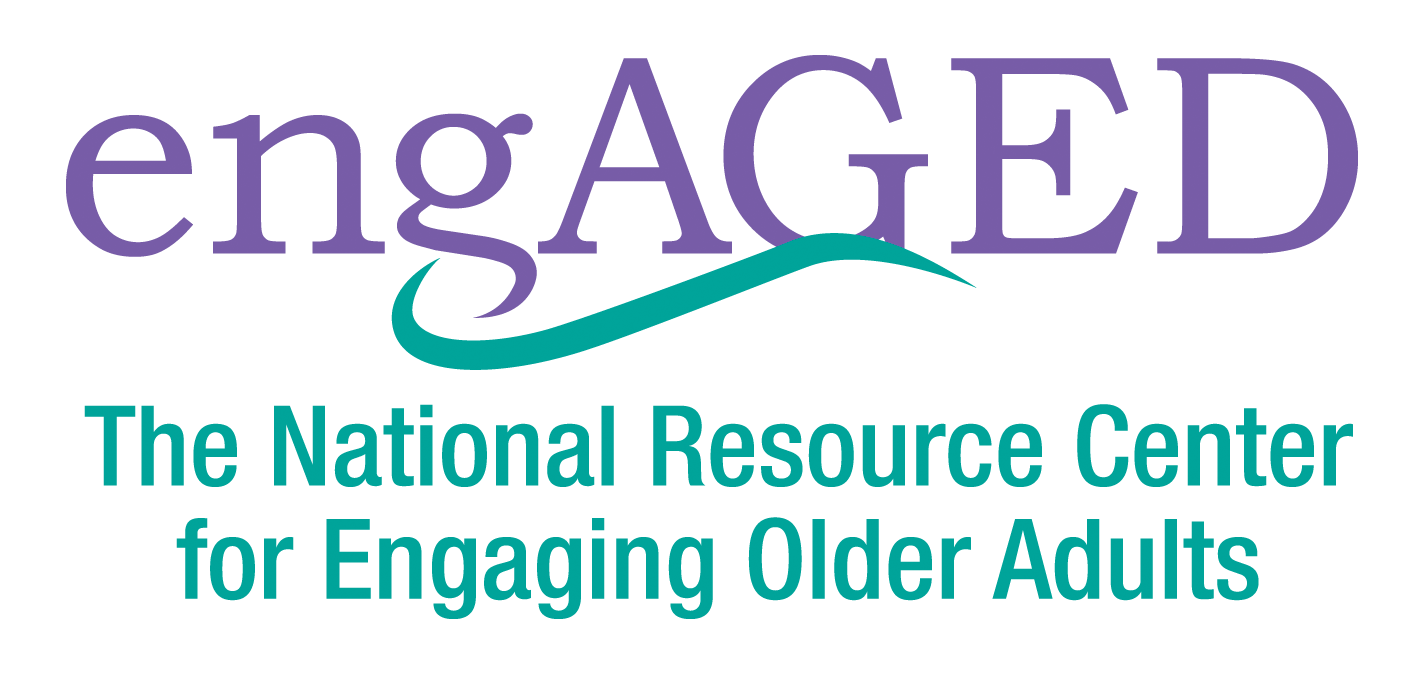Creative Approaches for Social Engagement and Connection When Developing Programming for Hispanic and Latino Older Adults and Caregivers: Takeaways from the May engAGED Webinar
This blog entry summarizes our most recent webinar. For more details, view the recording and slides.
Setting the Stage
When developing programs and services for Hispanic and Latino older adults, it is important to keep in mind key characteristics of these populations. One such characteristic is familismo or familism, a cultural value common among Hispanics and Latinos that involves the concept of putting family above the self. Familismo is associated with a preference for family caregiving, compared to living in residential settings such as nursing homes, and a sense of purpose associated with caregiving. Given familismo, when developing programs for Hispanics and Latinos, it is important to consider that family caregivers may be less likely to prioritize and practice self-care and seek support.
Reaching Hispanic and Latino Older Adults in Their Communities
For organizations that may not have bilingual staff, Community Health Workers (CHWs) are one way to build inroads with Hispanic and Latino populations. MHP Salud promotes CHWs as a culturally appropriate way to improve health and reach Hispanics and Latinos. CHWs can provide culturally appropriate education and information while helping organizations understand common cultural beliefs and norms to improve services. They look like and speak the language(s) of the community they serve, which can help promote trusting relationships with community members and other community-based organizations.
Social Engagement for Latino Older Adults and Caregivers
The Ventura County Area Agency on Aging (VCAAA) in Ventura, CA offers several social engagement programs for the Latino population it serves. VCAAA’s Senior Nutrition Program provides a culturally appropriate selection of produce as well as meals that are familiar to individuals in the Latino community the agency serves. To achieve this, VCAAA has entered into a partnership with Brenda’s Casamia and Catering, a small restaurant in Piru, CA that serves as one of the community meal sites for the VCAAA Senior Nutrition Program. In addition to meals, the restaurant serves as a gathering place for older residents to get the nutrition they need and the companionship they crave from a locally trusted businessowner.
Friendship House for Hispanic and Latino Older Adults
To meet the needs of the Hispanic and Latino older adults the Berks County Area Agency on Aging serves, the AAA developed a partnership with Centro Hispano Daniel Torres to offer a variety of culturally relevant activities, programs, services and supports in group settings that help reduce social isolation. Staff are all bilingual and bicultural to best match participants’ cultural values. Programming includes culturally appropriate meals, arts and crafts, computer classes, exercise classes, games and more. Through the partnership, the agency holds activities to recognize culturally important holidays, providing an opportunity for participants to celebrate and embrace traditions and culture together.
For organizations interested in enhancing the cultural competency among their staff, Centro Hispano Daniel Torres identified four concepts that organizations should consider:
Cultural knowledge. Knowing something about the history of those you serve.
Cultural awareness. Understanding those you serve and being open to the idea of changing cultural attitude.
Cultural sensitivity. Knowing the differences between cultures and not assigning any kind of value to the differences.
Cultural competency. Adding operational effectiveness to your programming and the work you do.
Tips for Developing Programs
Speakers shared the following tips for organizations interested in developing social engagement programs for Hispanic and Latino older adults and caregivers:
Determine your target audience. With more than 20 different Spanish-speaking countries represented in the United States, it is important to identify what cultures are primarily in your area and the interests and needs identified with each culture.
Establish trust with the community you seek to serve. Hire bilingual and bicultural staff who are embedded in the community and can help reach the target audience.
Build strong partnerships with trusted organizations in your community. Consider inviting some of these organizations to sit on your Advisory Committee.
Develop bilingual materials at an appropriate reading level or partner with trusted neighborhood venues that have programs and marketing materials already available to ensure effective communication.
Institutionalize cultural knowledge. Integrate cultural knowledge into every facet of the organization from training staff to product knowledge to organizational policies.
Additional Resources
To learn more about serving Hispanic and Latino older adults and caregivers, listen to the webinar recording and view the webinar slides.
